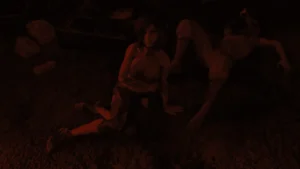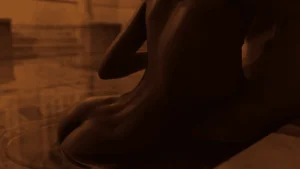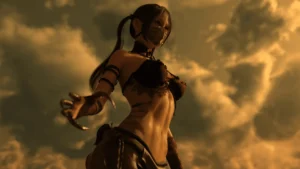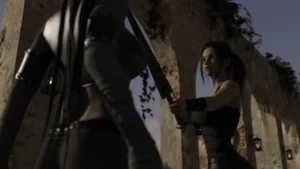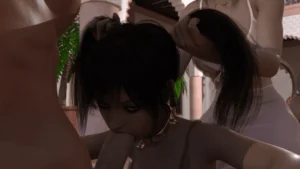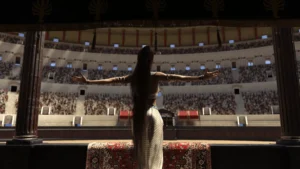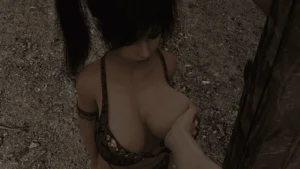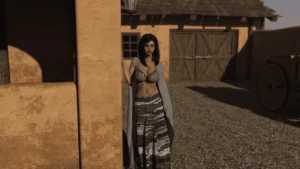
Desert Stalker
Play Desert Stalker
Desert Stalker review
A Deep Dive into the Post-Apocalyptic World
Desert Stalker is a game that has captured the attention of many with its unique blend of post-apocalyptic settings and engaging gameplay. Unlike many other games in its genre, Desert Stalker offers a free-roam system that keeps players immersed without the grind often found in similar titles. This article will delve into the game’s features, its immersive atmosphere, and what sets it apart from other games in the adult gaming space.
Gameplay and Features
What Makes Desert Stalker Unique? 🏜️
Let’s be honest – the market is flooded with post-apocalyptic games where you shoot mutants and scavenge tin cans. I’ve played dozens, and most blend together into a generic gray mush. Then I tried Desert Stalker, and it was a genuine surprise. What sets it apart isn’t just one feature, but how its systems work together to create something fresh. The Desert Stalker gameplay loop is built on a foundation of player freedom and consequential interaction that I’ve rarely experienced.
The most significant departure from the norm is its approach to storytelling and exploration. Many games in this genre funnel you down a narrow path, but here, the free-roam system is the heart of the experience. You’re not just following waypoints; you’re piecing together the history of the fall through environmental clues and dynamic encounters. I remember one session where I intended to just scout a canyon for water, but I stumbled upon a hidden bunker that led to a multi-hour side story completely separate from my main objective. That sense of genuine discovery is priceless.
Another standout is how it handles mature themes. In the landscape of adult gaming, many titles lean heavily on shock value. Desert Stalker, however, integrates its mature elements into the world’s fabric. Alliances, resource trading, and character relationships are complex, often morally ambiguous, and directly impact your journey. It’s a world that feels lived-in and harsh, not just edgy for the sake of it. The Desert Stalker features that resonated with me most were these nuanced, human interactions.
Exploring the Post-Apocalyptic World 🗺️
The world of Desert Stalker is a character in itself. From the moment you step out into the blinding sun, the immersive atmosphere is palpable. The audio design is incredible – the constant, gentle whistle of the wind over dunes, the crunch of your boots on cracked earth, and the sudden silence when a sandstorm approaches. It’s a world that feels both vast and intimately dangerous.
Central to this exploration is the brilliant free-roam system. This isn’t just an open map with repetitive activities. The world reacts to you. Your choices on where to go and who to help (or exploit) open up or close off entire narrative branches.
Example: Early on, I had to choose between helping a struggling settlement defend their water purifier or raiding a nearby scavenger camp for a quick resource gain. Helping the settlement was harder and riskier, but it eventually unlocked that location as a safe haven where I could trade for unique gear and information. The raiding option gave me immediate loot but made that entire region hostile to me later. This kind of meaningful choice is what defines the Desert Stalker gameplay.
The following table breaks down some of the core activities you’ll engage with while exploring:
| Activity | Impact on Game World |
|---|---|
| Scavenging & Resource Gathering | Directly affects your survival, crafting capabilities, and trade potential with factions. |
| Faction Diplomacy | Your reputation with groups can open up unique quests, safe zones, or turn areas into hostile territory. |
| Dynamic Event Discovery | Random encounters can lead to multi-stage stories, new companions, or valuable loot, making every journey unique. |
This design ensures that your time in the wastes is never just a simple fetch quest. You are actively shaping the world with every decision, which is a hallmark of the best post-apocalyptic games.
User Experience and Feedback 👥
When I look at the player feedback for Desert Stalker, one theme is overwhelmingly consistent: players feel empowered and immersed. This isn’t a game that holds your hand; it throws you into the deep end and trusts you to learn how to swim. That initial challenge can be daunting, but the community is incredibly supportive, sharing stories and strategies that highlight the game’s emergent storytelling.
A lot of the praise is directed at the game’s consistency. The immersive atmosphere isn’t just a visual or auditory treat; it’s backed up by gameplay mechanics. If you’re low on water, your character’s movement becomes sluggish and your aim wavers. If you spend too much time in a radiated zone without proper gear, the consequences are severe and lasting. This commitment to a cohesive experience is what players love.
“I’ve never felt so simultaneously lonely and invested in a game world. You’re just one person trying to make a life in this brutal place, and every interaction carries weight. It’s terrifying and brilliant.”
— A common sentiment echoed in Steam reviews and community forums.
This direct player feedback has also shown what resonates most: the freedom to fail. You can make bad choices, trust the wrong people, and end up in a situation that feels hopeless. But the game always gives you a way forward, even if it’s a desperate scramble to survive. This creates stories that are uniquely your own, which you’re then eager to share. For those diving into the world of adult gaming that seeks substance over spectacle, Desert Stalker stands as a prime example of how to do it right, creating a deeply personal and memorable Desert Stalker gameplay experience.
In conclusion, Desert Stalker offers a unique gaming experience with its engaging post-apocalyptic world and free-roam gameplay. Players appreciate the immersive atmosphere and the lack of grind, making it stand out in its genre. Whether you’re interested in the story or the gameplay mechanics, Desert Stalker is certainly worth exploring.

